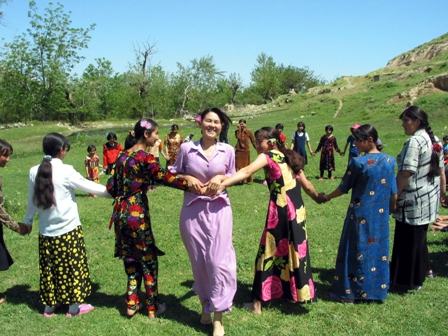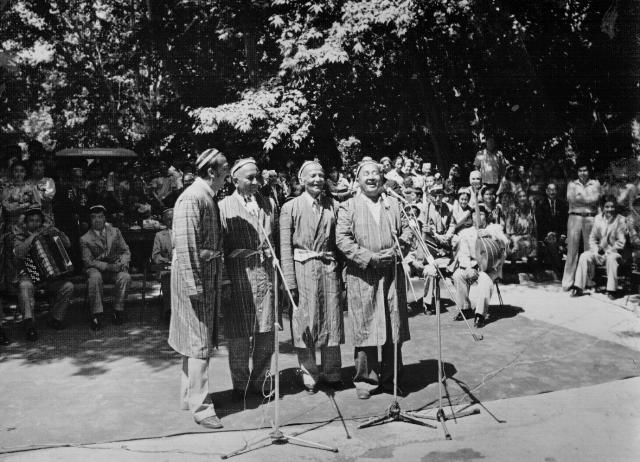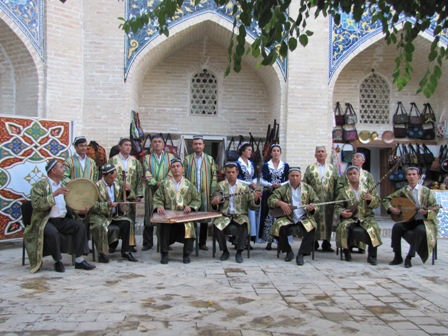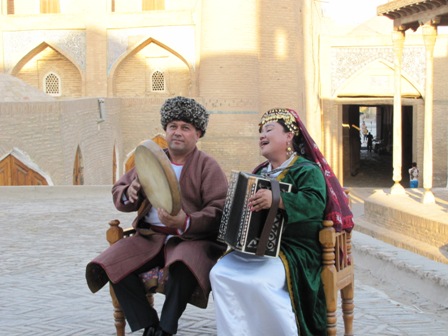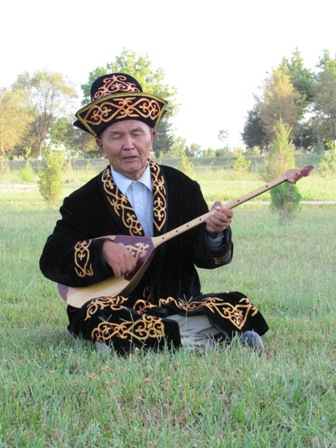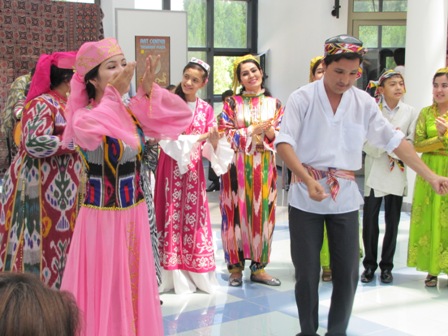Yoghoch Oymakorligi (Wood Carving)

Domain: Traditional Craftsmanship
Index Number: 05.08
Distinguishing feature of this type of applied art in Uzbekistan is that masters (i.e. wood carvers) produced not only various household items and goods, but also participated in creation of carved wooden columns, doors and other elements of architectural significance.
It is worth noting that on the territory of Uzbekistan the artifacts were discovered, which testify to the usage of carved wood in constructing civil as well as public worship buildings already in antiquity and in the Early Middle Ages. Nevertheless, wood carving began to play more prominent role in construction of architectural monuments and sites of the Islamic period. From among the masterpieces of wood carving, which are known and have universal significance, it is possible to mention carved wooden cenotaph, to be found in the Mausoleum of Sayfiddin Bokharzi (in Bukhara) and carved doors of the Mausoleum of Gori-Amir (in Samarkand).
Wide-scale application of carved wooden columns, doors and other architectural elements could be observed in the architecture of capital cities of Uzbek khanates, i.e. in Khiva, Bukhara and Kokand. In subsequent period, more exactly at the end of the XIX – beginning of the XX century, a wide variety of carved wooden household items were produced.
It bears mentioning that one of the leading centers of wood carving art was Khiva, the most prominent examples of which are columns and doors to be found in the buildings of Ichan-Qala complex (carved wooden columns in Juma mosque). The most famous representative of this school was the dynasty of Palvanovs. These were they, who created a considerable number of carved columns and doors in Khiva in the XIX – beginning of the XX century.
Also, popular are wonderful and refined works created by famous master from Kokand, K. Khaydarov, who incorporated in his creativity activity the best traditions of Kokand school of wood carving. Assortment of his products is represented by various architectural works (doors, panels, friezes) and different household items (decorated tables, stools, reading-stands (lavh), pencil-cases (qalamdon), etc.).
One of the leading centers of wood carving in the XIX-XX centuries was Tashkent. Carved wooden doors of Tashkent of that period were characterized by flat-relief carving. Artistic principles of Tashkent wood carving school, which evolved at the end of the XIX – beginning of the ХХ century, were continued by such masters as М. Qosimov and А. Fayzullaev. From among contemporary wood carving masters of Tashkent it is possible to mention А. Azlarov, who combines the work on household items with development of elements for architectural buildings. During independence years А. Azlarov participated in creation of carved wooden doors, columns and friezes for a number of buildings, such as Memorial Complex (ensemble) on Independence Square, State Museum of History of Temurids, "Turkiston" Palace, etc. Nowadays, traditions developed by famous wood carving masters of Tashkent such as S. Khodjaev, M. Qosimov, А. Fayzullaev, Kh. Qosimov and N. Ibragimov are being continued by А. Azlarov (and his apprentices), М. Ibragimova, S. Rakhmatullaev, Kh. Khasanov and others.
In the 1990s the situation in wood carving began to change due to the transformations taking place in the local market. Nowadays, wood carving masters of Kokand, Khiva and Samarkand concentrate on creation of items and products for interiors of architectural buildings in Uzbekistan and abroad (and this makes up their main income-generating source). At the same time, many-sided decorative tables, carved screens (with fretwork), and other items, which were once popular in the past, are disappearing from the assortment of contemporary wood carvers. When it comes to household items, it could be told that nowadays they are used mainly as souvenirs. And these are wood carvers of Tashkent, who are mostly specializing in creation of such items. Nowadays, Tashkent wood carvers not only create lavhs of sophisticated structure, boxes of various shapes and purposes, decorative wall-mounted dishes, but also introduce fragments of small lacquered paintings to décor of various carved items. Most of their products are sold by them in specially organized premises (which are used as both workshop and shop). These premises are located inside two madrasahs of Tashkent, i.e. in Khastimom and Abulqosim madrasahs.





